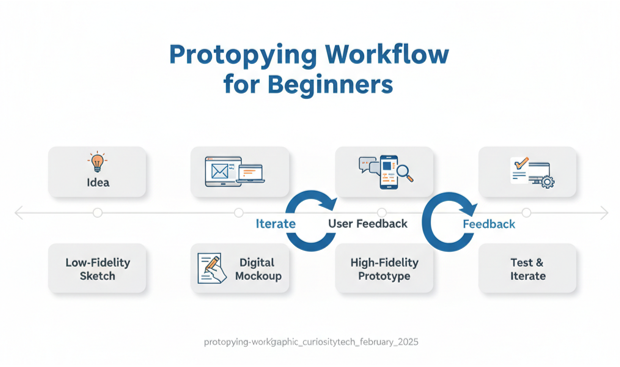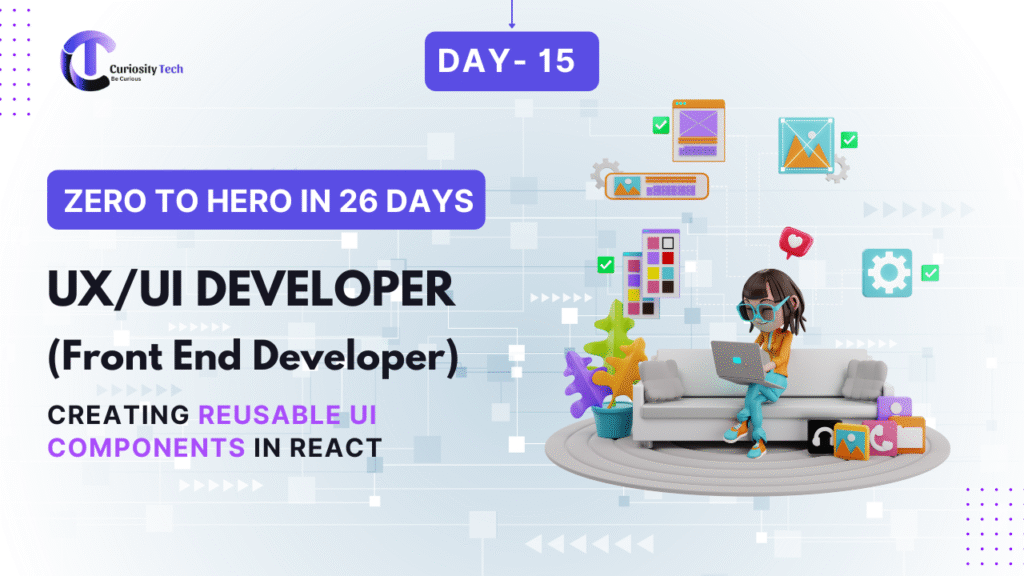Prototyping is often the bridge between a brilliant idea and a tangible product. For beginners, understanding how to bring a concept to life without diving headfirst into full-scale production is crucial. At CuriosityTech, we believe that prototyping is not just a step in design; it’s a philosophy—experiment early, fail fast, learn faster, and iterate continuously. In this blog, we explore the essential tools, techniques, and strategies that can help any beginner kickstart their prototyping journey.
What is Prototyping?
Prototyping is the creation of an early model or sample of a product that allows designers, developers, and stakeholders to test ideas, gather feedback, and refine concepts before committing significant resources. Think of it as sketching with functionality—turning abstract ideas into something you can touch, interact with, or demonstrate.
Prototypes can vary from low-fidelity sketches to fully functional digital mockups. The key is to focus on learning and iteration rather than perfection.
Why Prototyping Matters
Saves Time and Money: Testing concepts early avoids costly mistakes later in development.
Enhances Communication: Stakeholders can see, touch, and understand your ideas, reducing misunderstandings.
Encourages Innovation: Iterative prototypes allow teams to experiment freely and discover unexpected solutions.
Boosts Confidence: Teams can validate functionality, usability, and design choices before investing heavily.
At CuriosityTech, we’ve guided beginners through numerous prototyping journeys, helping them transition from sketches on paper to viable product concepts in a structured, guided environment.
Types of Prototypes
Prototype Type
Fidelity
Purpose
Example Tools
Low-Fidelity
Basic sketches or wireframes
Test structure, flow, and usability
Paper, Balsamiq, Figma (wireframe mode)
Medium-Fidelity
Clickable mockups with basic interactivity
Refine user interface and experience
Adobe XD, Figma, Sketch
High-Fidelity
Fully interactive and realistic prototypes
Simulate the final product
InVision, Axure, Proto.io, Figma (interactive mode)
Functional Prototypes
Actual working versions
Test real-world functionality
Arduino, Raspberry Pi, Python, HTML/CSS prototypes
Hierarchical diagram

Prototyping Techniques for Beginners
Paper Prototyping
Draw screens, layouts, and interactions on paper.
Use sticky notes for dynamic elements.
Quick to iterate, no technical skills required.
Digital mockups
Tools like Figma, Sketch, and Adobe XD let beginners design interactive digital prototypes.
Allows easy sharing with remote teams and stakeholders
Physical Prototyping
.
Ideal for hardware or tangible product ideas.
Tools include Arduino kits, 3D printers, or even cardboard models.
At CuriosityTech, our hands-on workshops allow beginners to transform ideas into functional demos.
Storyboarding and Scenarios
Map out user journeys step by step.
Helps identify pain points and interaction gaps before building anything tangible.
Tools Every Beginner Should Know
Figma: Cloud-based, collaborative design and prototyping.
Adobe XD: Powerful UI/UX prototyping tool with animation support.
Balsamiq: Simplifies low-fidelity wireframes for rapid ideation.
InVision: Turn static screens into interactive prototypes.
Arduino / Raspberry Pi: For physical or IoT prototypes, ideal for beginners exploring electronics.
At CuriosityTech, beginners are encouraged to explore multiple tools to find the workflow that resonates with their style and project needs. The goal is to experiment fearlessly and refine constantly.
Best Practices for Beginner Prototyping
Start Simple: Don’t overcomplicate; focus on validating core functionality first.
Iterate Quickly: Accept feedback and make changes without hesitation.
Document Your Decisions: Keep track of what works and why.
Engage Stakeholders Early: Show prototypes to potential users, clients, or mentors.
Mix Digital and Physical Approaches: Even a digital app can benefit from a paper prototype phase.
Infographic Diagram Suggestion

CuriosityTech Approach
At CuriosityTech, we blend creativity with technical guidance. Beginners are trained not only on software tools but also on problem-solving, ideation, and iterative thinking. Our workshops, online resources, and mentorship programs emphasize hands-on learning, enabling novices to develop confidence and competence in prototyping.
Whether it’s a simple mobile app concept or a smart IoT device, we ensure that learning remains practical, interactive, and directly applicable to real-world projects.
Conclusion
Prototyping is more than just a design step—it’s the heartbeat of innovation. For beginners, it’s a playground for experimentation, a lab for ideas, and a path to learning from mistakes without high stakes. By using the right tools, applying structured techniques, and embracing iterative thinking, anyone can transform abstract ideas into tangible, testable concepts.
With guidance from platforms like CuriosityTech, beginners can gain the confidence to explore, prototype, and bring their ideas to life—one iteration at a time.



